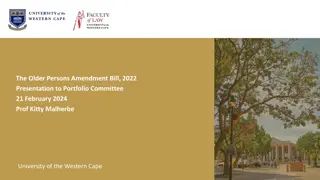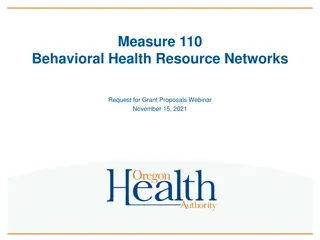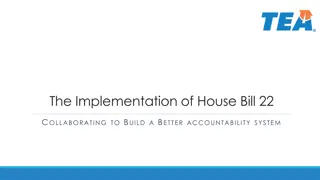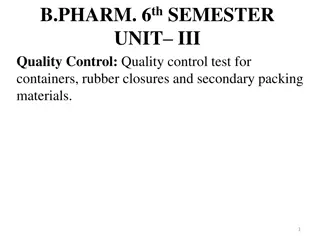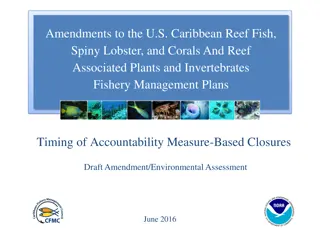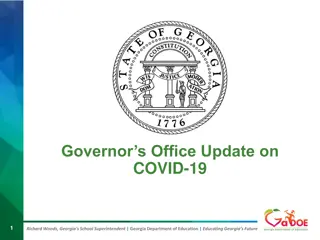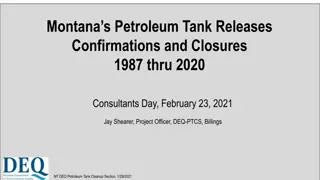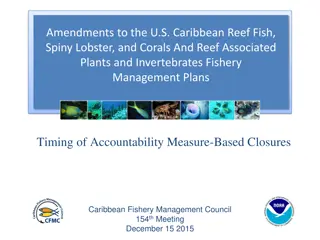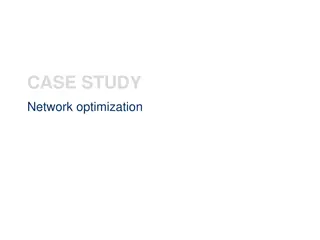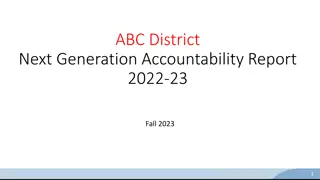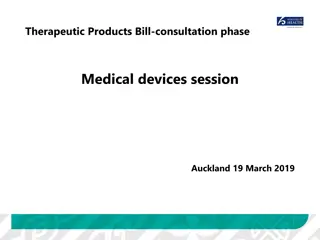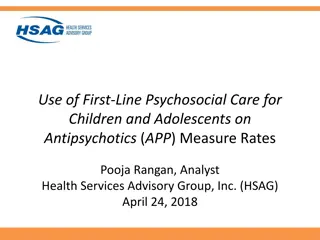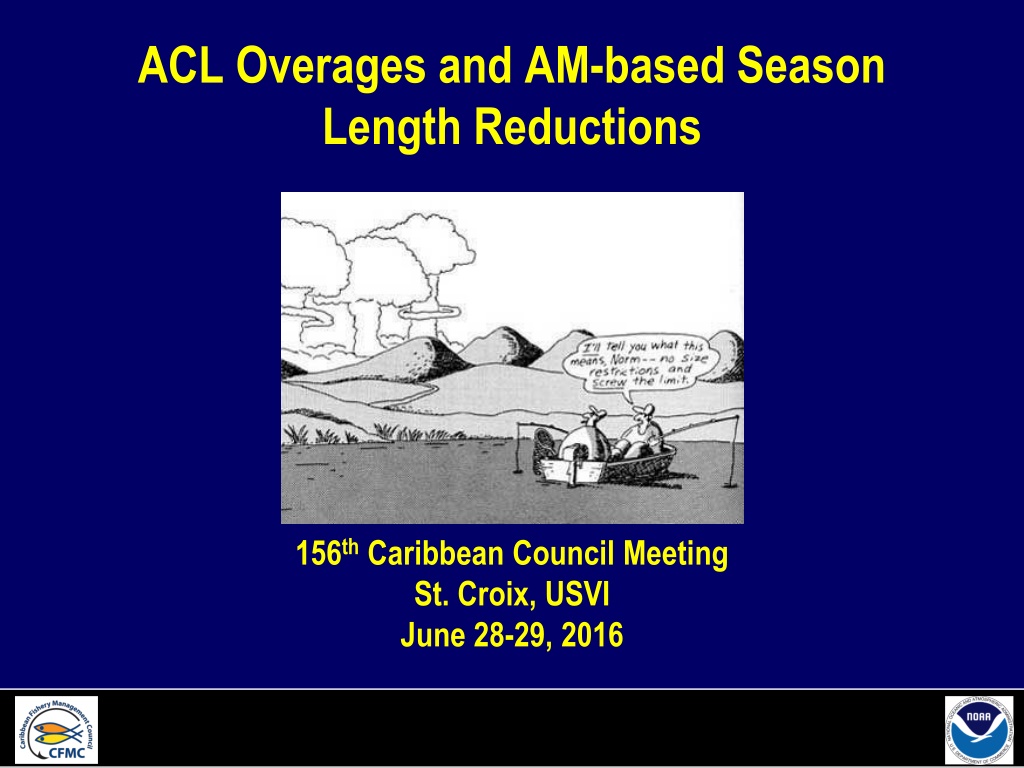
Reductions in ACL Overages and AM-Based Season Length - Caribbean Council Meeting Highlights
Explore insights from the 156th Caribbean Council Meeting in St. Croix, USVI, focused on ACL overages, season length reductions, and stock complexities in Puerto Rico fisheries. Learn about strategies to prevent ACL exceedances and optimize recreational and commercial fishing yields through new FMPs and closures.
Download Presentation

Please find below an Image/Link to download the presentation.
The content on the website is provided AS IS for your information and personal use only. It may not be sold, licensed, or shared on other websites without obtaining consent from the author. Download presentation by click this link. If you encounter any issues during the download, it is possible that the publisher has removed the file from their server.
E N D
Presentation Transcript
ACL Overages and AM-based Season Length Reductions 156th Caribbean Council Meeting St. Croix, USVI June 28-29, 2016 v v 1
ACL Overages and AM-based Season Length Reductions PUERTO RICO COMMERCIAL 2010 Species v v 2
ACL Overages and AM-based Season Length Reductions PUERTO RICO COMMERCIAL 2011 Species v v 3
ACL Overages and AM-based Season Length Reductions PUERTO RICO RECREATIONAL 2010 Species Recreational OY is not achieved, yield is lost. Council could address this in new FMPs . v v 4
ACL Overages and AM-based Season Length Reductions PUERTO RICO RECREATIONAL 2011 Species v v 5
ACL Overages and AM-based Season Length Reductions St. Croix 2010 Species v v 6
ACL Overages and AM-based Season Length Reductions St. Croix 2011 Species v v 7
ACL Overages and AM-based Season Length Reductions St. Thomas/St. John 2010 Species v v 8
ACL Overages and AM-based Season Length Reductions St. Thomas/St. John 2011 Species v v 9
ACL Overages and AM-based Season Length Reductions Stocks or Stock Complexes with ACL Overages Average Annual Landings (2012-2014) Relative to the ACL v v 10
ACL Overages and AM-based Season Length Reductions Determining the Length of Closure Necessary to Ensure the ACL is Not Again Exceeded in 2016 To determine the length of the required AM-based closure for each species or species group, NMFS must estimate landing rates for the closure year, in this case 2016. In the U.S. Caribbean, NMFS has previously used the most recent available year of landings data to estimate monthly landings rates and determine the duration of required closures. In those instances, temporal trends in landings established that the most recent year of landings data best anticipates fishing conditions in the year of the closure. v v 11
ACL Overages and AM-based Season Length Reductions Why a Three-year Average (2012-2014) to Determine the Required Length of Closure in 2016? However, NMFS has determined that, for 2012-2014 U.S. Caribbean landings data (i.e. the time period used to identify ACL overages), no temporal trend can be discerned. Species/Year Commercial: Snapper Unit 2 Spiny lobster Wrasses Triggerfish and Filefish 2012 2013 2014 Average 184,621 385,776 68,592 76,826 108,570 275,448 48,945 64,125 174,478 376,766 60,045 71,827 155,889 345,997 59,164 70,926 60,156 48,606 53,910 54,224 Parrotfishes Recreational: Jacks 57,675 29,136 100,799 62,537 To determine the appropriate closure dates, 2012-2014 landings data were averaged within each month, and those monthly averages were used to determine the length of time necessary to ensure to the greatest degree possible that the ACL will not again be exceeded in 2016. v v 12
ACL Overages and AM-based Season Length Reductions Closure Dates Federal Register /Vol. 81, No. 104 /Tuesday, May 31, 2016 /Rules and Regulations Page 34283 v v 13
ACL Overages and AM-based Season Length Reductions Closure Bulletins in Spanish and English Published on June 2. (I have a few if you need a copy) v v 14
ACL Overages and AM-based Season Length Reductions Actual Increase in Landings or Enhanced Reporting? SEFSC Determination: USVI In the U.S. Virgin Islands the angelfish, squirrelfish, and wrasse FMUs exceeded the established ACLs. Following examination of commercial reporting forms each overage was attributed to improved data collection. None of the angelfish, squirrelfish, or wrasse species were present on the St. Croix or St. Thomas/St. John commercial logbook reporting forms during the benchmark years for ACL calculation. Angelfish and squirrelfish species reporting requirements were added to the St. Croix and St. Thomas/St. John commercial logbook forms in July, 2011. Those additions represent improvement in the collection of angelfish and squirrelfish data. Wrasses, however, have not been added to commercial logbook forms in the U.S. Virgin Islands. The increase in wrasse landings is likely due to a minor improvement in data collection through more frequent write-in reporting of this species group by fishers. v v 15
ACL Overages and AM-based Season Length Reductions Actual Increase in Landings or Enhanced Reporting? SEFSC Determination: Puerto Rico Several possible explanations for ACL overages were investigated: Reporting fractions (also called correction factors or expansion factors)*; The effects on mean landings due to recent edits and corrections of the Puerto Rico commercial landings data set; The effect of those same data edits on ACL calculations. *Commercial landings in Puerto Rico are known to be incompletely reported and so, reporting fractions or the fraction of landings reported, are used to estimate total landings from reported landings. v v 16
ACL Overages and AM-based Season Length Reductions Impacts from Reporting Fractions A lot of variability in reporting fractions but a general increase since 2010. The methods for calculating the year and coast specific reporting fractions, as well as the calculation of total landings, have not changed since 2007. The SEFSC is not aware of any change in 2014 that would result in landings calculations that are not consistent with the methods in use since 2007. Calculation of reporting fractions and the implementation of surveys necessary to collect data for estimating reporting fractions are conducted by Puerto Rico DNER. v v 17
ACL Overages and AM-based Season Length Reductions Effect of Data Editing on Mean Landings During 2015, the Puerto Rico commercial landings data set was edited to: eliminate duplicate records, correct data processing errors in fishing center assignments to coast, and properly associate gear with fishing trips. Removal of duplicate records and correct assignment of fishing center to coast could result in differences in landings totals compared to summaries of the unedited data. The SEFSC found only a few duplicate records. Since reporting fractions are calculated from and are applied to specific coasts, re- assignment of records to the correct fishing centers is expected to heavily affect the landings in those places. The recent data edits, however, resulted in very minor changes in mean landings calculated for the period 2012-2014 and do not explain the reported ACL overages found in the 2012-2014 mean landings. v v 18
ACL Overages and AM-based Season Length Reductions Effect of Data Editing on ACLs The effects of data corrections and edits on ACL calculation was examined by recalculating all ACLs that had been established using Puerto Rico commercial landings data The difference between each recalculated ACL and the corresponding existing ACL was determined. Mean landings for the period 2012-2014 were also calculated and compared with the recalculated ACLs. The results of these calculations demonstrate that most of the ACL units identified by SERO as exceeding the established Puerto Rico commercial fishery ACL would also have exceeded ACLs calculated using the edited Puerto Rico commercial fishery landings data. The degree to which the ACL was exceeded differed slightly between the recalculated ACL and the existing ACL. v v 19
ACL Overages and AM-based Season Length Reductions SEFSC Conclusions The SEFSC believes the ACLs for the U.S. Virgin Islands' Angelfish, Squirrelfish, and Wrasses FMUs were exceeded due to improved data collection. This is the direct result of the addition of these species to the reporting forms currently in use in the USVI or, in the case of wrasses, more frequent write-ins for that species on the reporting forms. On the other hand, the ACL overages in the Puerto Rico commercial Parrotfish, Snapper Unit 2, Spiny Lobster, Triggerfish and Filefish, and Wrasses FMUs appear to be the result of increased landings. Although there may have been improvements in compliance with reporting requirements for Puerto Rico, this improvement is already incorporated in the reporting fractions (i.e., as a higher fraction of pounds reported) resulting in a lower estimate of the number of pounds not reported. This means fewer unreported pounds are added to the reported pounds to obtain the estimated total landings. In addition, the SEFSC also reviewed impacts resulting from edits to the data and determined that the overages would still have occurred since the data edits resulted in only minor changes for those species with overages. Puerto Rico recreational data are collected via the Marine Recreational Information Program (MRIP) survey. No changes to that standardized survey program have occurred, so there is no basis for attributing the PR recreational Jacks ACL overage to enhanced reporting. v v 20
ACL Overages and AM-based Season Length Reductions A Word on Expansion Factors Only used in Puerto Rico Applied by coast (north, south, east, west), but no further resolution (e.g., to FMU) Increases reported landings to account for unreported landings, resulting in expanded landings, which is what we use as our landings data. SU2 as an example: 2012-2014 average (expanded) catch = 155,889 pounds SU2 ACL = 145,916 pounds (this overage results in an AM-based season reduction for 2016) For the sake of this example, we ll use 0.75 as the Expansion Factor for the west coast of Puerto Rico. That translates to (0.75 x 155,889) 116,917 reported pounds landed. Had the Expansion Factor been 0.81 instead of 0.75, the expanded landings would have been 144,342 pounds rather than 155,889. NO ACL OVERAGE WOULD HAVE OCCURRED based on this admittedly simplistic example. Keep in mind that, based on development of the 2012 Expansion Factors, the Standard Deviation resulting from variability among various west coast landing locations was roughly 0.55. This is not a PR DNER issue. If all landings were reported there would be no need for Expansion Factors. If Expansion Factors are required, they can only represent the general fishery due to funding and logistical constraints. YET ANOTHER EXAMPLE OF WHY IT IS ESSENTIAL FOR FISHERS TO REPORT THEIR LANDINGS, ACCURATELY AND ON TIME! v v 21
ACL Overages and AM-based Season Length Reductions Stocks or Stock Complexes with OFL Overages 2014 Annual Landings Relative to the OFL Stock Total Landings 376,766 Overfishing Limit 364,355 Percent of OFL 103% PR Spiny Lobster PR Triggerfish and Filefish 96,821 89,337 108% PR Wrasse 68,819 65,774 105% v v 22

